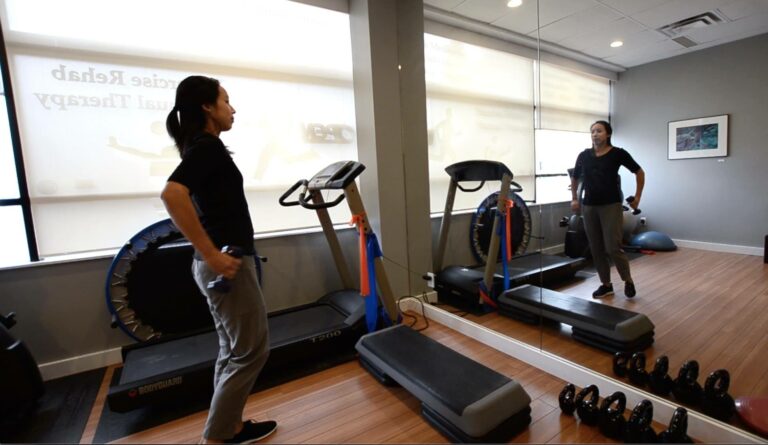

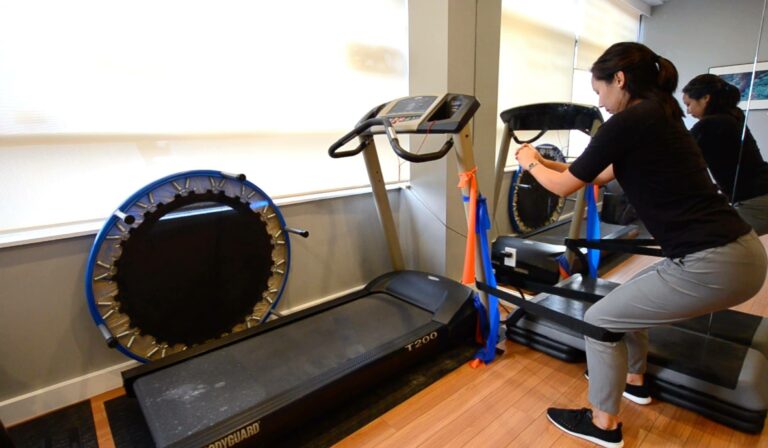

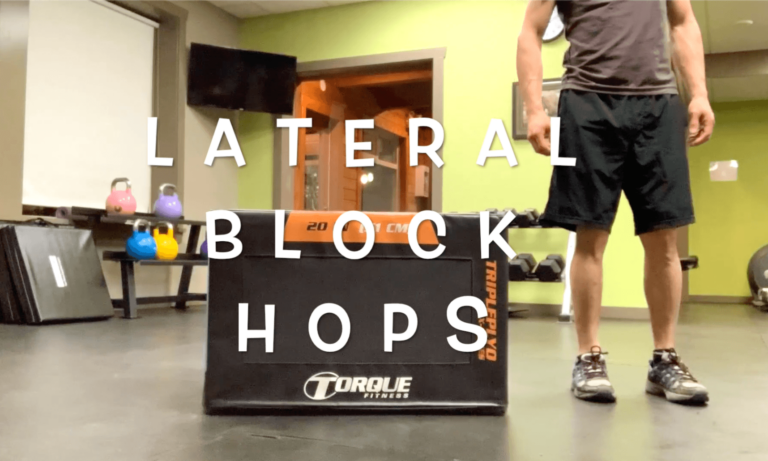
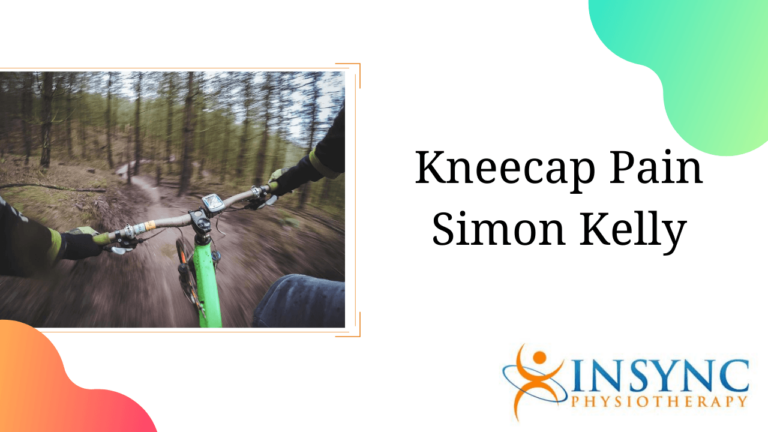
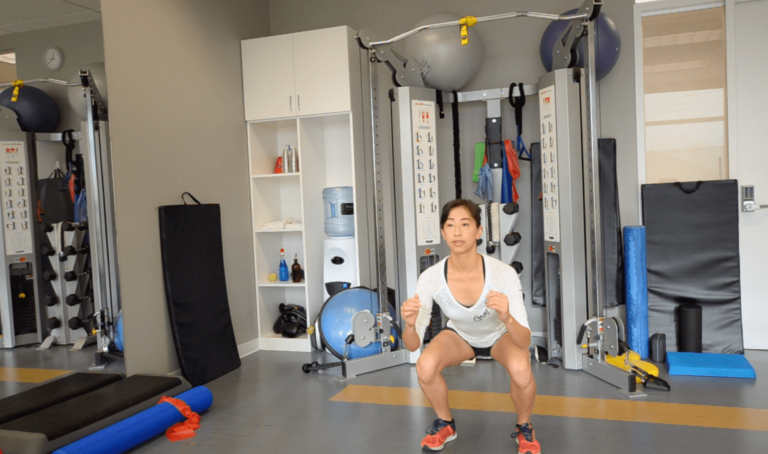
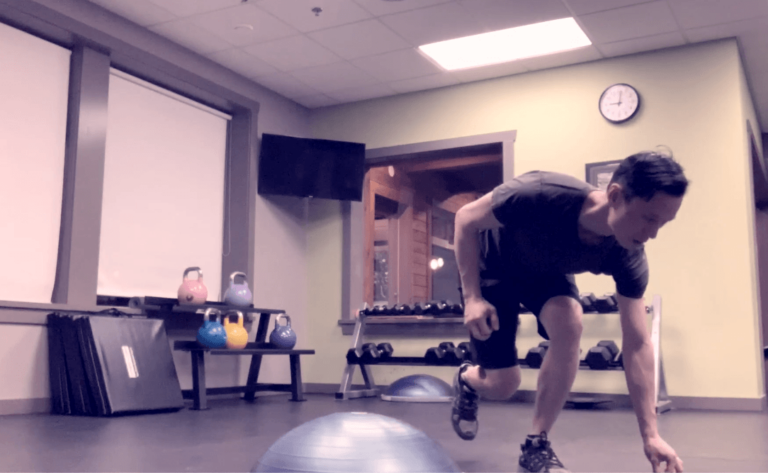
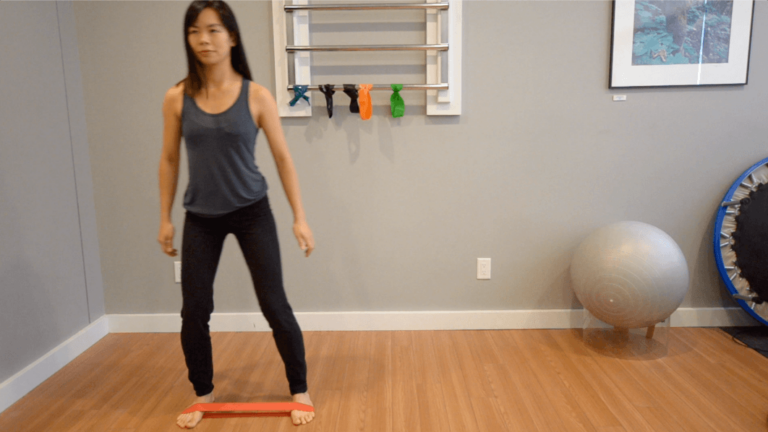
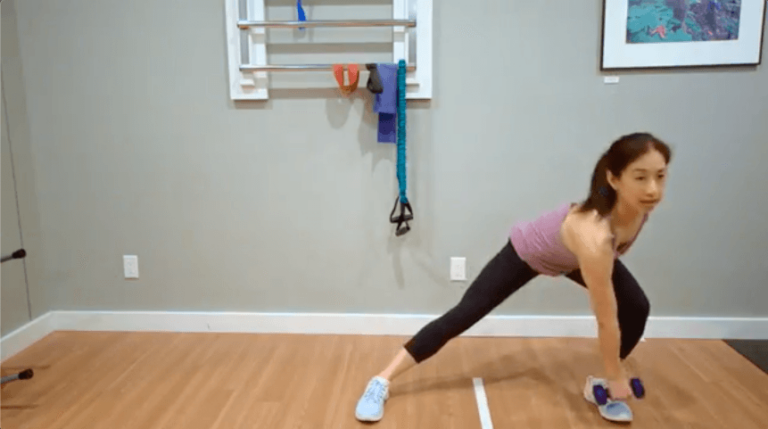
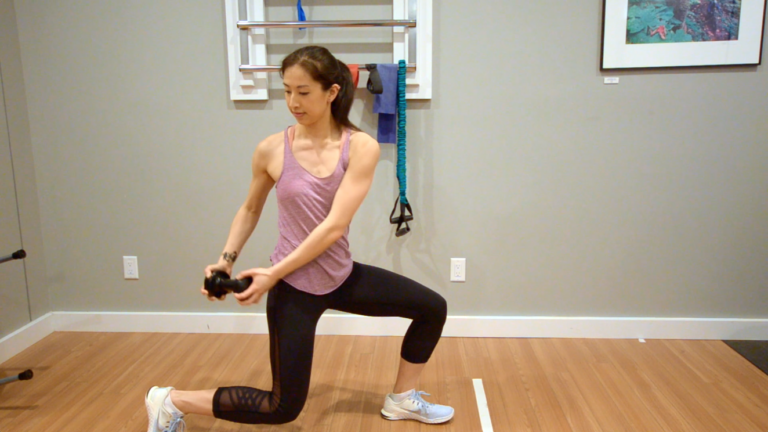
Knee Ligament Sprain Injuries – Reverse Lunge Woodchops
Hold onto a ten pound dumbbell with your hands on both ends and engage your inner core stability muscles below your belly button. Then lunge backwards with your right leg performing a wood chopping motion with the upper body and arms turning only your torso. Push back up with the right foot to the start…
